Formability, Microstructure and Properties of Inconel 718 Superalloy Fabricated by Selective Laser Melting Additive Manufacture Technology
Abstract
1. Introduction
2. Materials and Methods
2.1. Raw Materials
2.2. SLM Processing
2.3. Microstructural and Mechanical Properties Characterization
3. Results and Discussion
3.1. Surface Morphologies and Densifications
3.2. Phases Compositions
3.3. Microstructural Characteristics
3.4. Microhardness
3.5. Wear Performance
4. Conclusions
- (1)
- The surface morphology and densification of the SLM as-built Inconel 718 specimens were controlled by input E. Within the parameters selected in this study, with the increase of input E, surface holes and balling effect were gradually weakened and disappeared, the surface morphology became smoother, the scanning tracks tended to be smooth and continuous, and the sample densification level was improved steadily. Density increases from 95.75% at the lowest E of 103 J/mm3 to 99.15% at the highest E of 190 J/mm3. When the E was properly set, the near-full dense specimens with good metallurgical bonding and no critical defect can be obtained.
- (2)
- The microstructure of the SLM as-built specimens showed obvious orientational distribution characteristics. It was found that the coarsen columnar dendrites grew across multi-layers along the building direction in the X-Z plane and the fine equiaxed crystals were observed in the X-Y plane, because the main temperature gradient direction was almost consistent with the Z-axis although the heat flux of a single pool varied from edge to center. With the increasing of E, the columnar dendrites became finer. The elements with large atomic radii such as Nb and Mo clustered in interdendritic region. The microsegregation of ehese Nb and Ti elements resulted in reduced ″ -phase content and the formation of brittle Laves phase.
- (3)
- By increasing applied E, the microhardness and wear resistance of SLM-fabricated parts have been significantly improved, and their fluctuation range has been reduced simultaneously. As E was changed from 103 J/mm3 to 190 J/mm3, the average microhardness increased significantly from 290.2 HV0.2 to 348 HV0.2, average COF from 0.40 to 0.29 and the corresponding wear rate from 10.31 × 10−4 mm3/Nm to 5.67 × 10−4 mm3/Nm. The combined action of higher density, higher microhardness and friction protective layer improved the wear performance.
Author Contributions
Funding
Data Availability Statement
Conflicts of Interest
References
- Liu, Y.C.; Zhang, H.J.; Guo, Q.Y.; Zhou, X.S.; Ma, Z.Q.; Huang, Y.; Li, H.J. Microstructure evolution of Inconel 718 superalloy during hot working and its recent development tendency. Acta Met. Sin. 2018, 54, 1653–1664. [Google Scholar]
- Chang, S.H. In situ TEM observation of γ′, γ″ and δ precipitations on Inconel 718 superalloy through HIP treatment. J. Alloys Compd. 2009, 486, 716–721. [Google Scholar] [CrossRef]
- Fu, S.H.; Dong, J.X.; Zhang, M.C.; Xie, X. Alloy design and development of Inconel718 type alloy. Mater. Sci. Eng. 2009, 499, 215–220. [Google Scholar] [CrossRef]
- Malmelöv, A.; Fisk, M.; Lundbäck, A.; Lindgren, L.-E. Mechanism based flow stress model for alloy 625 and alloy. Materials 2020, 13, 5620. [Google Scholar]
- Ni, T.W.; Dong, J.X. Creep behaviors and mechanisms of Inconel718 and Allvac718plus. Mater. Sci. Eng. 2017, 700, 406–415. [Google Scholar] [CrossRef]
- Zhao, M.; Zhao, Z.; Liu, L.; Luo, G.; Chen, W. Influence of heat treatment on cyclic response of nickel-based superalloy Inconel 718 up to very-high cycle regime. Materials 2020, 13, 5358. [Google Scholar] [CrossRef] [PubMed]
- Hao, Z.P.; Li, J.N.; Fan, Y.H.; Ji, F.F. Study on constitutive model and deformation mechanism in high speed cutting Inconel718. Arch. Civ. Mech. Eng. 2019, 19, 439–452. [Google Scholar] [CrossRef]
- Hao, Z.P.; Ji, F.F.; Fan, Y.H.; Zhang, N.N. Failure feature and characterization of material of shear band in cutting Inconel718. J. Manuf. Process. 2019, 45, 154–165. [Google Scholar] [CrossRef]
- Zhu, X.R.; Xu, P.W.; Liang, Y.L.; Wei, Z.J.; Liang, Y. Flash butt weldability of Inconel718 alloy. J. Mater. Process. Tech. 2018, 258, 326–333. [Google Scholar] [CrossRef]
- Amato, K.N.; Gaytan, S.M.; Murr, L.E.; Martinez, E.; Shindo, P.W.; Hernandez, J.; Collins, S.; Medina, F. Microstructures and mechanical behavior of Inconel 718 fabricated by selective laser melting. Acta. Mater. 2012, 60, 2229–2239. [Google Scholar] [CrossRef]
- Shi, C.X.; Liu, Y.F.; Li, Y.; Sun, G.B.; Zhang, Z.; Feng, Z.C. Microstructure and high temperature wear resistance of TiC/Inconel718 composites in-situ synthesized by plasma melting deposition technique. Rare Metal Mater. Eng. 2019, 48, 1497–1504. [Google Scholar]
- Huang, W.D.; Lin, X. Research progress in laser solid forming of high performance metallic component. Materials 2010, 29, 12–27. [Google Scholar]
- Ren, Y.M.; Lin, X.; Huang, W.D. Research progress of microstructure and fatigue behavior in additive manufacturing Ti-6Al-4V alloy. Rare Metal Mater. Eng. 2017, 46, 3160–3168. [Google Scholar]
- Wang, H.M. Materials’ fundamental issues of laser additive manufacturing for high-performance large metallic components. Acta Aeronaut. Astronaut. Sin. 2014, 35, 2690–2698. [Google Scholar]
- Martínez, S.; Ortega, N.; Celentano, D.; Sánchez Egea, A.J.; Ukar, E.; Lamikiz, A. Analysis of the part distortions for Inconel 718 SLM: A case study on the NIST test artifact. Materials 2020, 13, 5087. [Google Scholar] [CrossRef]
- Wang, X.; Chou, K. Effects of thermal cycles on the microstructure evolution of Inconel 718 during selective laser melting process. Addit. Manuf. 2017, 18, 1–14. [Google Scholar] [CrossRef]
- Tucho, W.M.; Cuvillier, P.; Sjolyst-Kverneland, A.; Hansen, V. Microstructure and hardness studies of Inconel 718 manufactured by selective laser melting before and after solution heat treatment. Mater. Sci. Eng. 2017, 689, 220–232. [Google Scholar] [CrossRef]
- Bajaj, P.; Wright, J.; Todd, I.; Jägle, E.A. Predictive process parameter selection for selective laser melting manufacturing: Applications to high thermal conductivity alloys. Addit. Manuf. 2019, 27, 246–258. [Google Scholar] [CrossRef]
- Takamichi, I.; Roderick, I.L.G. The Physical Properties of Liquid Metals; Oxford University Press Inc.: New York, NY, USA, 1993; p. 173. [Google Scholar]
- Karimi, P.; Raza, T.; Andersson, J.; Svensson, L.E. Influence of laser exposure time and point distance on 75-pm-thick layer of selective laser melted alloy. Int. J. Adv. Manuf. Technol. 2018, 94, 2199–2207. [Google Scholar] [CrossRef]
- Li, X.; Shi, J.J.; Wang, C.H.; Cao, G.H.; Russell, A.M.; Zhou, Z.J.; Li, C.P.; Chen, G.F. Effect of heat treatment on microstructure evolution of Inconel 718 alloy fabricated by selec tive laser melting. J. Alloys Compd. 2018, 764, 639–649. [Google Scholar] [CrossRef]
- Tao, P.; Li, H.X.; Huang, B.Y.; Hu, Q.D.; Gong, S.L.; Xu, Q.Y. The crystal growth, intercellular spacing and microsegregation of selective laser melted Inconel 718 superalloy. Vacuum 2019, 159, 382–390. [Google Scholar] [CrossRef]
- Strößner, J.; Terock, M.; Glatzel, U. Mechanical and microstructural investigation of nickel-based superalloy IN718 manufactured by selective laser melting (SLM). Adv. Eng. Mater. 2015, 17, 1099–1105. [Google Scholar] [CrossRef]
- Yi, J.H.; Kang, J.W.; Wang, T.J.; Wang, X.; Feng, T.; Feng, Y.L.; Wu, P.Y. Microstructure and mechanical behavior of bright crescent areas in Inconel 718 sample fabricated by selective laser melting. Mater. Des. 2021, 197, 109259. [Google Scholar] [CrossRef]
- Deng, C.; Kang, J.; Feng, T.; Feng, Y.; Wang, X.; Wu, P. Study on the selective laser melting of CuSn10 powder. Materials 2018, 11, 614. [Google Scholar] [CrossRef]
- Wan, H.Y.; Zhou, Z.J.; Li, C.P.; Chen, G.F.; Zhang, G.P. Effect of scanning strategy on grain structure and crystallographic texture of Inconel 718 processed by selective laser melting. J. Mater. Sci. Technol. 2018, 34, 1799–1804. [Google Scholar] [CrossRef]
- Popovich, V.A.; Borisov, E.V.; Popovich, A.A.; Sufiarov, V.S.; Masaylo, D.V.; Alzine, L. Functionally graded Inconel 718 processed by additive manufacturing: Crystallographic texture, anisotropy of microstructure and mechanical properties. Mater. Des. 2016, 114, 441–449. [Google Scholar] [CrossRef]
- Zhao, X.; Chen, J.; Lin, X.; Huang, W.D. Study on microstructure and mechanical properties of laser rapid forming Inconel. Mater. Sci. Eng. 2008, 478, 119–124. [Google Scholar]
- Wang, X.; Kang, J.W.; Wang, T.J.; Wu, P.Y.; Feng, T.; Zheng, L.L. Effect of layer-wise varying parameters on the microstructure and soundness of selective laser melted Inconel718 alloy. Materials 2019, 12, 2165. [Google Scholar] [CrossRef]
- Gu, D.D.; Hagedorn, Y.C.; Meiners, W.; Wissenbach, K.; Poprawe, R. Nanocrystalline TiC reinforced Ti matrix bulk-form nanocomposites by Selective Laser Melting (SLM): Densification, growth mechanism and wear behavior. Compos. Sci. Technol. 2011, 71, 1612–1620. [Google Scholar] [CrossRef]
- Hao, Z.B.; Tian, T.; Yang, Y.; Ping, S.Q.; Li, X.G.; Ge, C.C.; Gan, B.; Zhang, Q. Effect of post-treatments on microstructure and properties of a novel nickel-based powder metallurgy superalloy processed by selective laser melting. Mater. Res. Express 2019, 6, 1065. [Google Scholar] [CrossRef]
- Hao, Z.B. Microstructures and Properties of the Nickel-Based Powder Metallergy Supperalloy Prepared by Selective Laser Melting. Ph.D. Thesis, Beijing University of Science and Technology, Beijing, China, June 2020. [Google Scholar]
- Zhang, D.Y.; Zhang, P.D.; Liu, Z.; Feng, Z.; Wang, C.J.; Guo, Y.W. Thermoflfluid fifield of molten pool and its effects during selective laser melting (SLM) of Inconel 718 alloy. Addit. Manuf. 2018, 21, 567–578. [Google Scholar]
- Erukhimovitch, V.; Baram, J. Crystallization kinetics. Phys. Rev. 1994, 50, 5854–5856. [Google Scholar] [CrossRef]
- Jia, Q.B.; Gu, D.D. Selective laser melting additive manufacturing of Inconel718 superalloyparts: Densification, microstructure and properties. J. Alloys Compd. 2014, 585, 713–721. [Google Scholar] [CrossRef]
- Pearson, W.B.; Thompson, L.T. The lattice spacings of nickel solid solutions. Can. J. Phys. 1957, 35, 349–357. [Google Scholar] [CrossRef]
- Rupert, T.J.; Trenkle, J.C.T.; Schuh, C.A. Enhanced solid solution effects on the strength of nanocrystalline alloys. Acta Mater. 2011, 59, 1619–1631. [Google Scholar] [CrossRef]
- Niu, M.Y.; Bi, Q.L.; Zhu, S.Y.; Yang, J.; Liu, W.M. Microstructure, phase transition and tribological performances of Ni3Si-based self-lubricating composite coatings. J. Alloys Compd. 2013, 555, 367–374. [Google Scholar] [CrossRef]
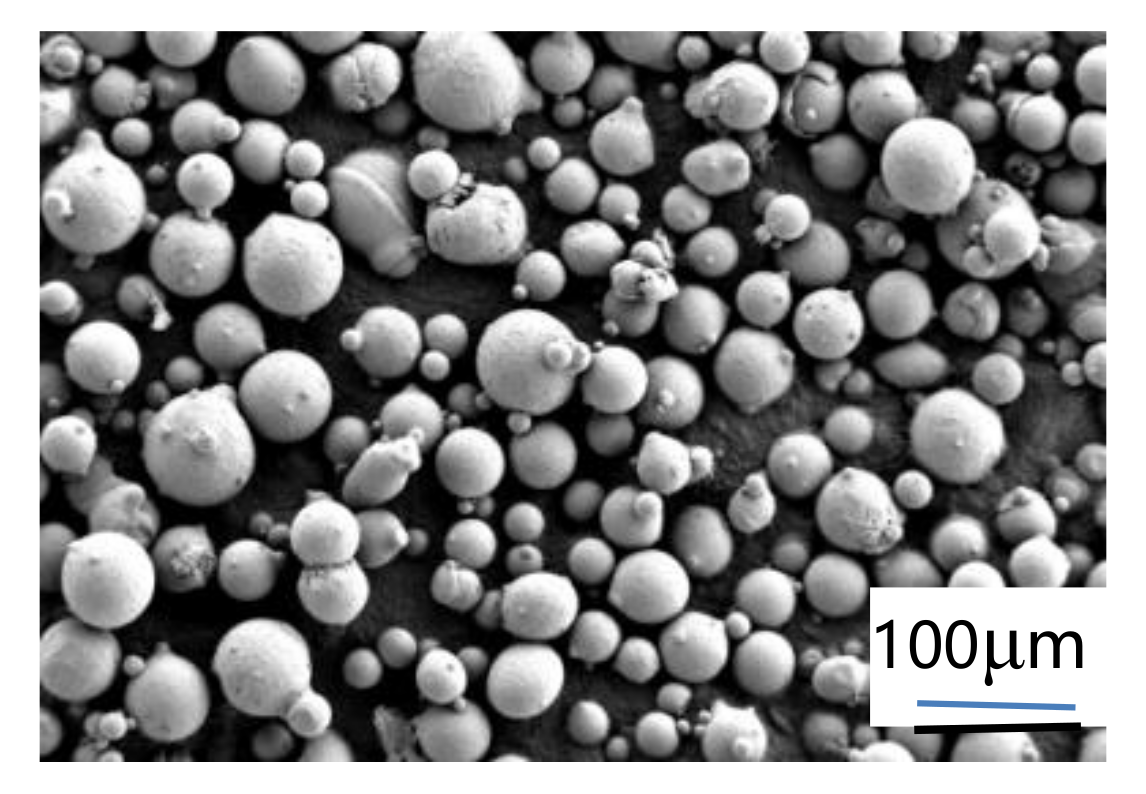
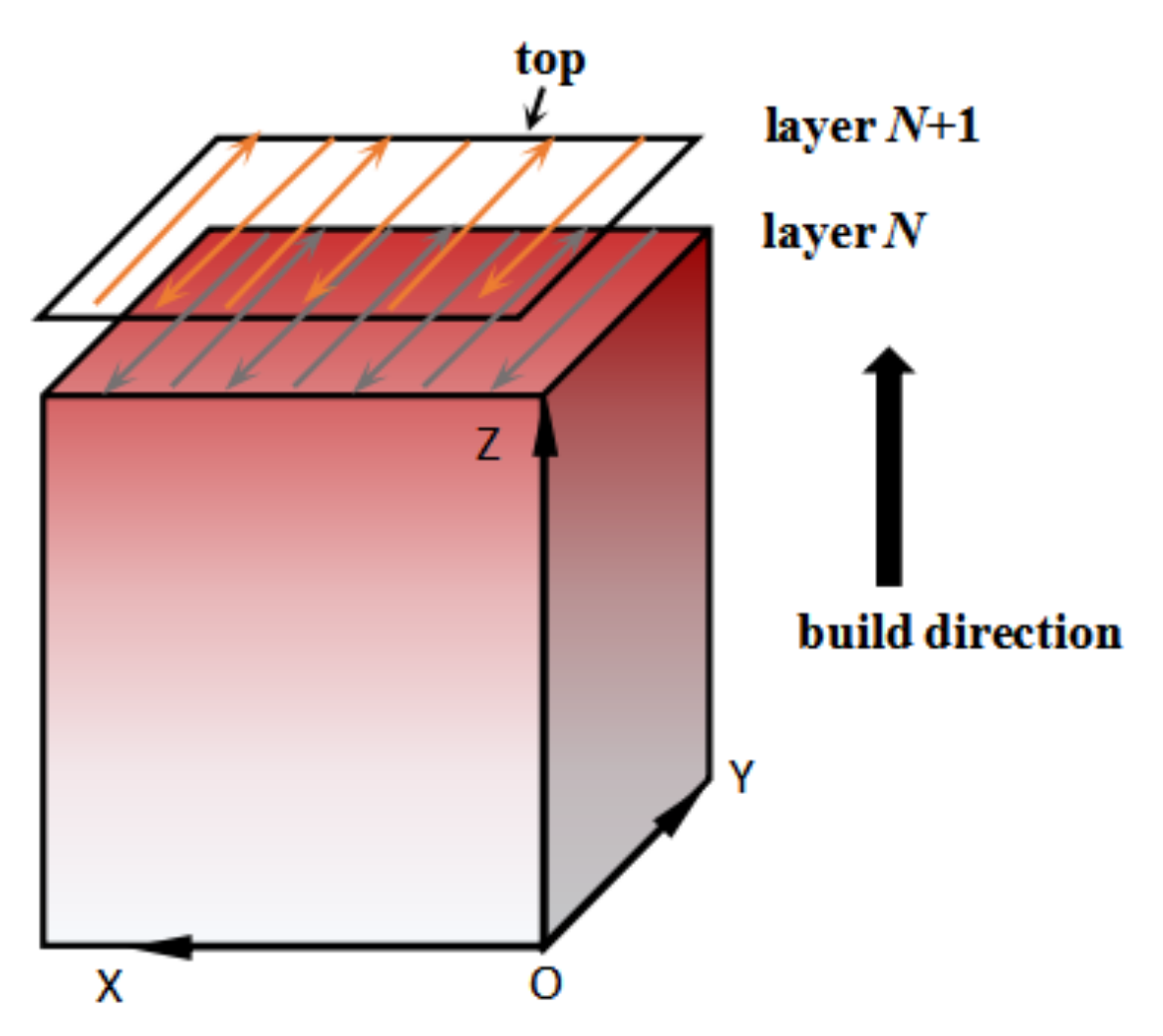
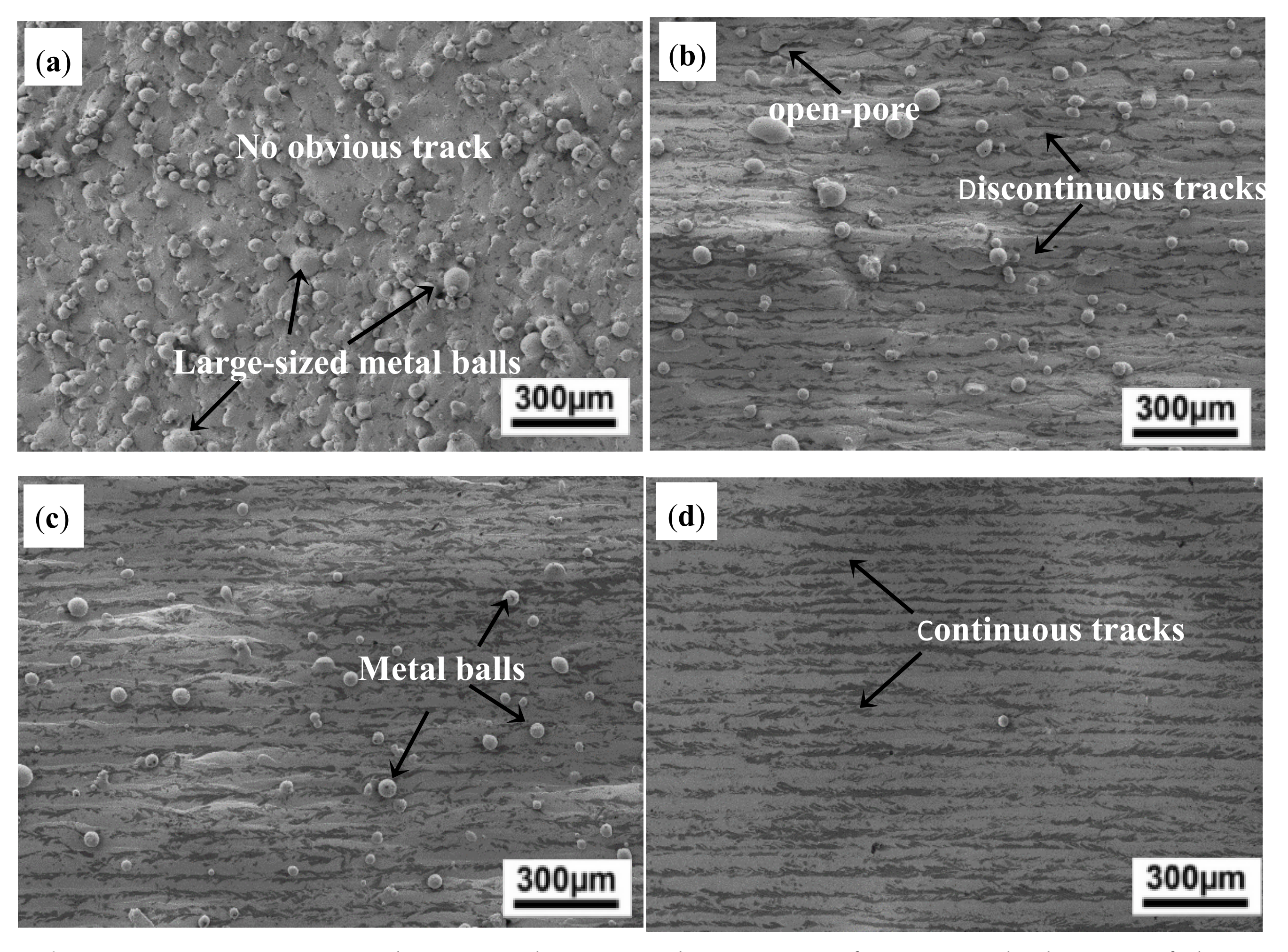
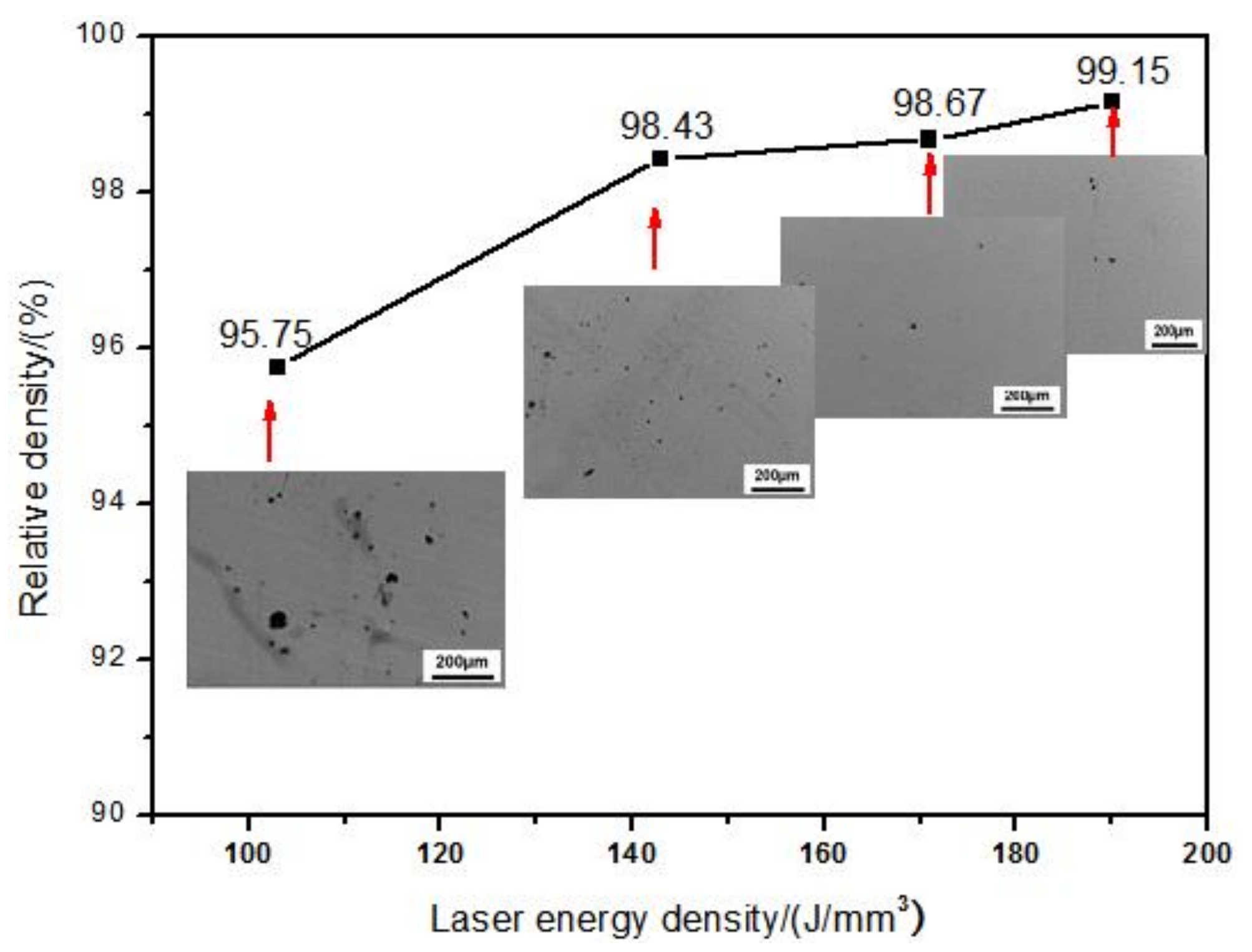

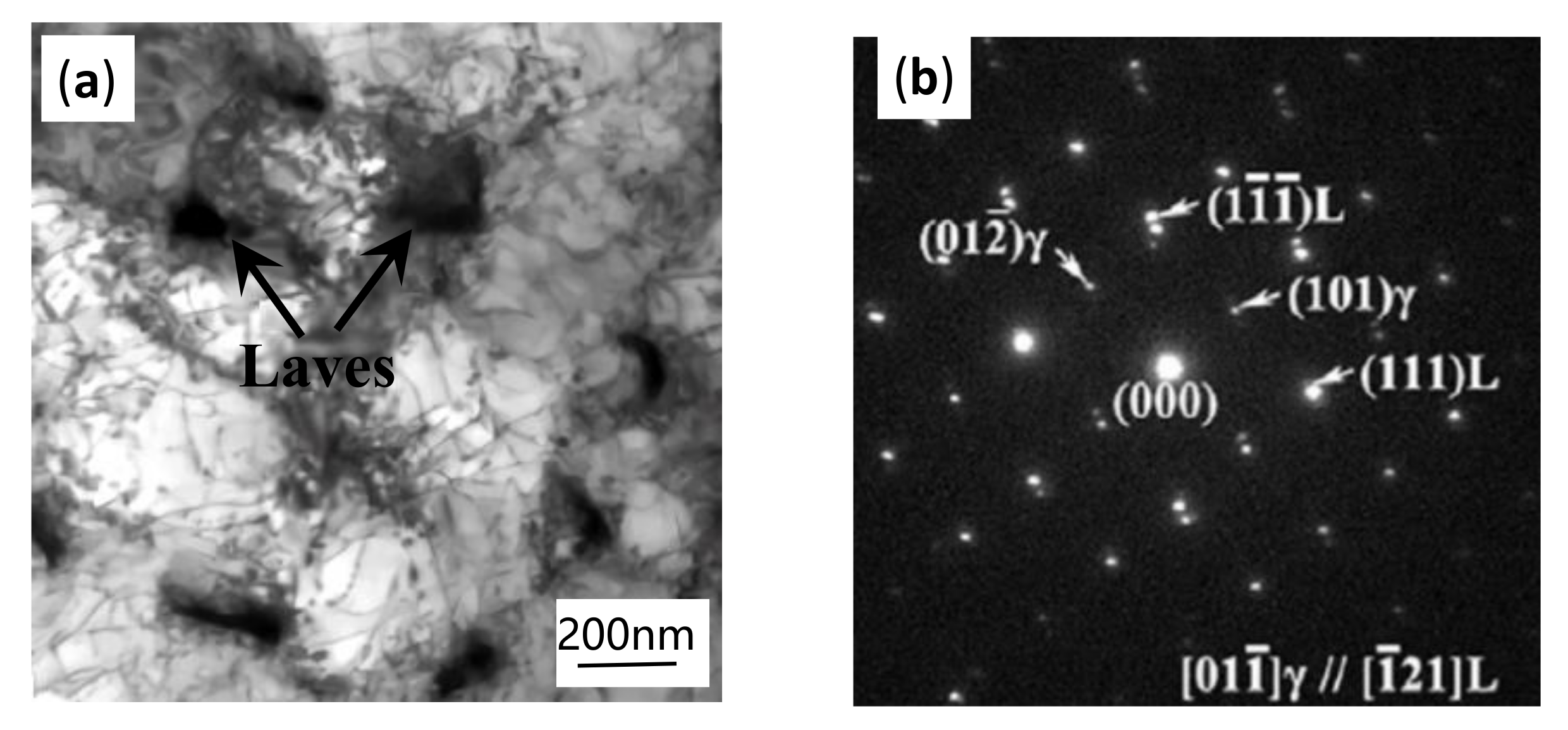

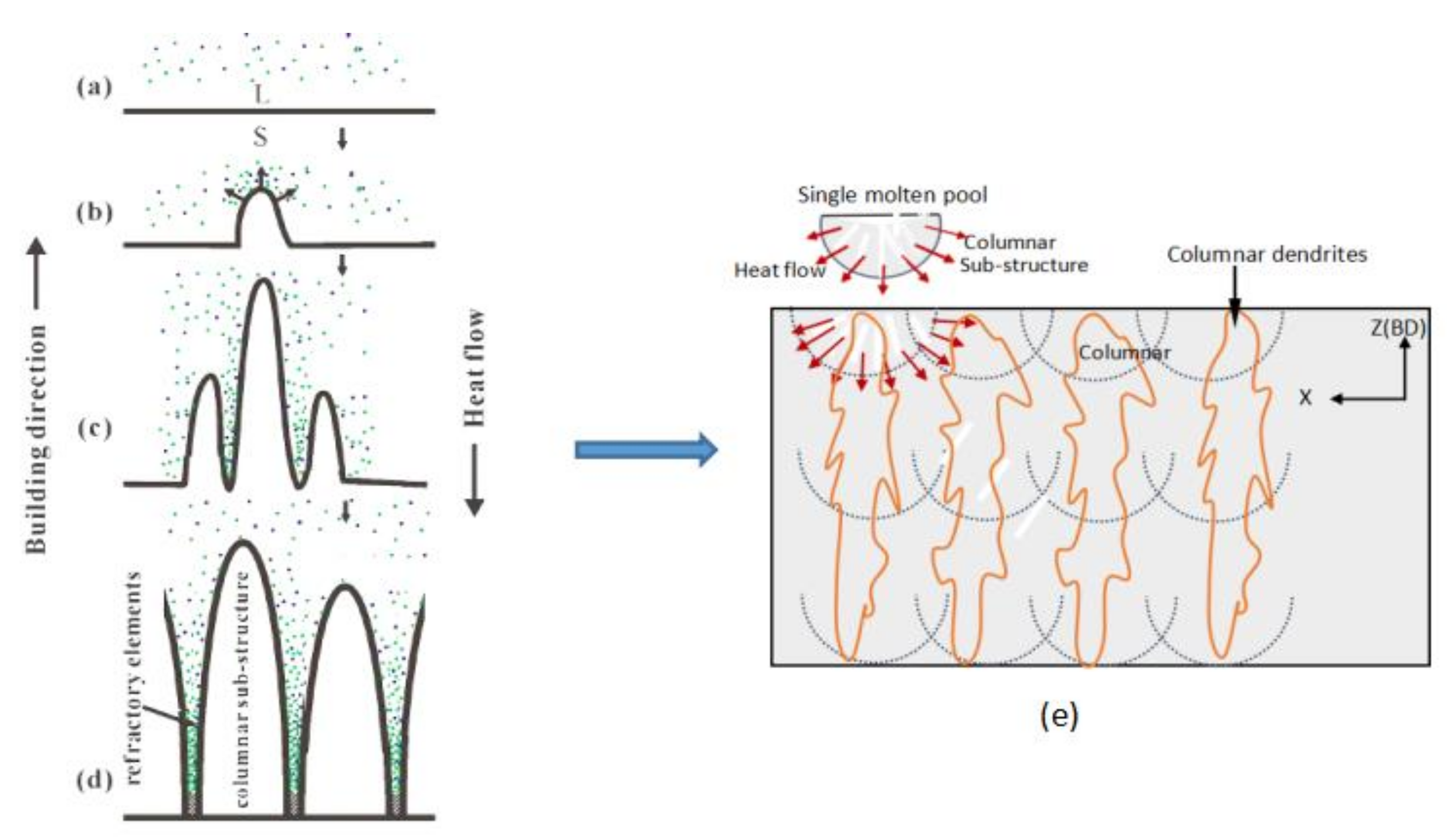

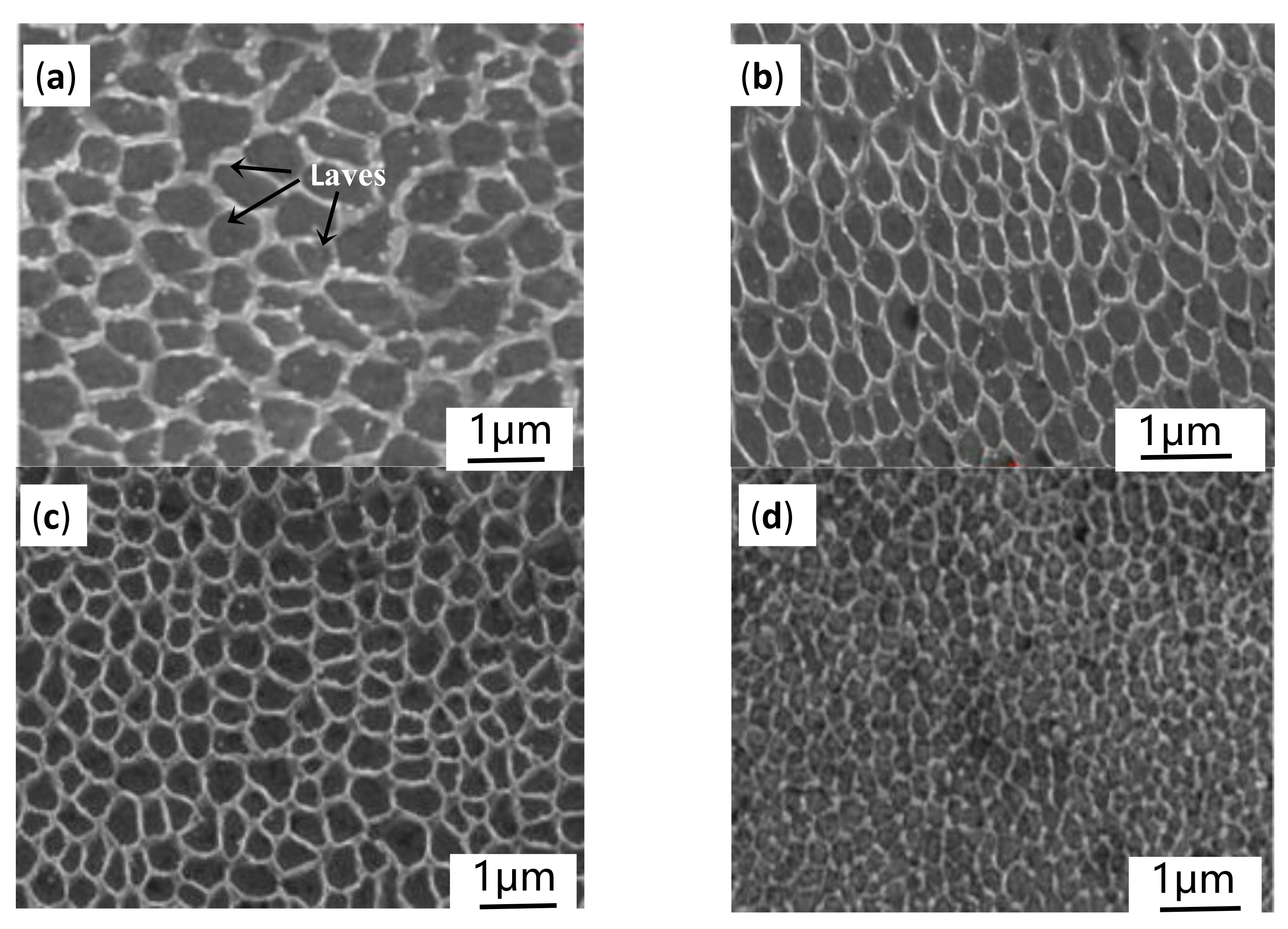
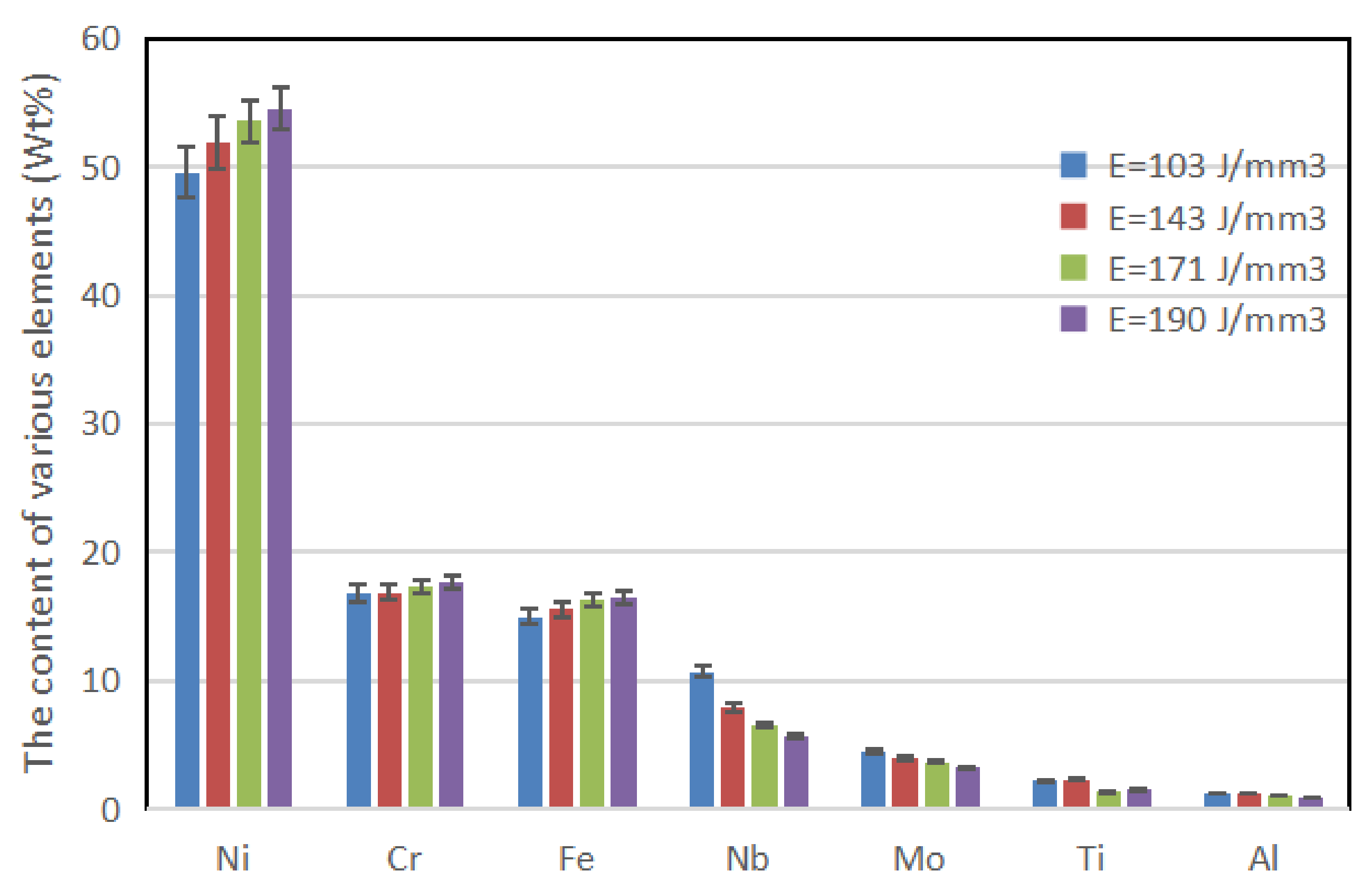

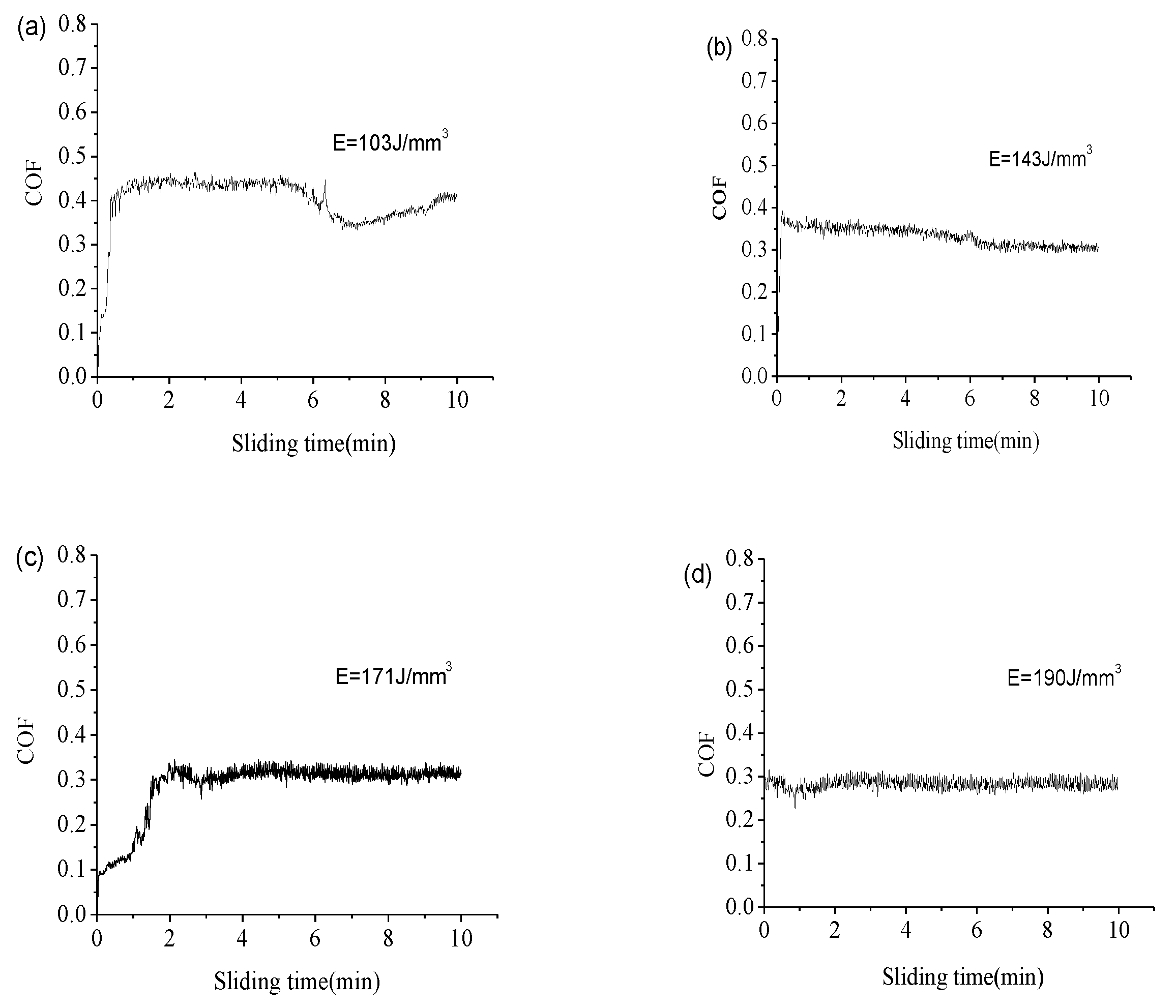

| Ni | Cr | Fe | Nb | Mo | Al | Ti | C |
|---|---|---|---|---|---|---|---|
| Balance | 18.10 | 14.98 | 10.96 | 4.62 | 1.58 | 2.80 | 0.08 |
| Parameter | Value |
|---|---|
| Laser spot diameter /(D, μm) | 50 |
| Powder layer thickness/(t, μm) | 25 |
| Hatch distance/(h, μm) | 35 |
| Laser power/(P, W) | 90, 100, 90, 100 |
| Laser scanning speed/(v, mm/s) | 1000, 800, 600, 600 |
| Laser energy density/(J/mm3) | 103, 143, 171, 190 |
| Sample (J/mm3) | γ | γ″ | ||
|---|---|---|---|---|
| 2θ (°) | Intensity | 2θ (°) | Intensity | |
| 103 | 43.591 | 1698 | 43.765 | 1056 |
| 143 | 43.653 | 1676 | 43.796 | 1035 |
| 171 | 43.673 | 1149 | 43.847 | 959 |
| 190 | 43.743 | 1063 | 43.938 | 950 |
| Input Laser Energy Density (E, J/mm3) | Γ (fcc) | γ″ (bct) | R-Factors | ||
|---|---|---|---|---|---|
| Cell Parameter (Å) a = b = c | Weight% | Cell Parameter (Å) a = b ≠ c | Weight% | ||
| 103 | 3.6039 ± 0.0014 | 92.54 | a = 3.6259 ± 0.0020 c = 7.4013 ± 0.0016 | 7.46 | Rp = 5.96 Rwp = 7.54 Rexp = 6.38 GOF = 1.40 |
| 143 | 3.5993 ± 0.0014 | 92.57 | a = 3.6237 ± 0.0016 c = 7.4000 ± 0.0012 | 7.43 | Rp = 6.10 Rwp = 7.75 Rexp = 6.49 GOF = 1.45 |
| 171 | 3.5988 ± 0.0001 | 92.74 | a = 3.6214 ± 0.0006 c = 7.3983 ± 0.0006 | 7.26 | Rp = 5.49 Rwp = 7.51 Rexp = 6.23 GOF = 1.39 |
| 190 | 3.5972 ± 0.0001 | 92.82 | a = 3.6206 ± 0.0001 c = 7.3868 ± 0.0007 | 7.18 | Rp = 7.22 Rwp = 9.75 Rexp = 7.19 GOF = 1.84 |
| Input laser energy density (E, J/mm3) | 103 | 143 | 171 | 190 |
| Diameter of columnar dendrites in the X-Z plane(μm) | 0.53 | 0.42 | 0.31 | 0.27 |
Publisher’s Note: MDPI stays neutral with regard to jurisdictional claims in published maps and institutional affiliations. |
© 2021 by the authors. Licensee MDPI, Basel, Switzerland. This article is an open access article distributed under the terms and conditions of the Creative Commons Attribution (CC BY) license (http://creativecommons.org/licenses/by/4.0/).
Share and Cite
Liu, X.; Wang, K.; Hu, P.; He, X.; Yan, B.; Zhao, X. Formability, Microstructure and Properties of Inconel 718 Superalloy Fabricated by Selective Laser Melting Additive Manufacture Technology. Materials 2021, 14, 991. https://doi.org/10.3390/ma14040991
Liu X, Wang K, Hu P, He X, Yan B, Zhao X. Formability, Microstructure and Properties of Inconel 718 Superalloy Fabricated by Selective Laser Melting Additive Manufacture Technology. Materials. 2021; 14(4):991. https://doi.org/10.3390/ma14040991
Chicago/Turabian StyleLiu, Xiaoping, Kuaishe Wang, Ping Hu, Xiaomei He, Baicheng Yan, and Xuzhao Zhao. 2021. "Formability, Microstructure and Properties of Inconel 718 Superalloy Fabricated by Selective Laser Melting Additive Manufacture Technology" Materials 14, no. 4: 991. https://doi.org/10.3390/ma14040991
APA StyleLiu, X., Wang, K., Hu, P., He, X., Yan, B., & Zhao, X. (2021). Formability, Microstructure and Properties of Inconel 718 Superalloy Fabricated by Selective Laser Melting Additive Manufacture Technology. Materials, 14(4), 991. https://doi.org/10.3390/ma14040991





